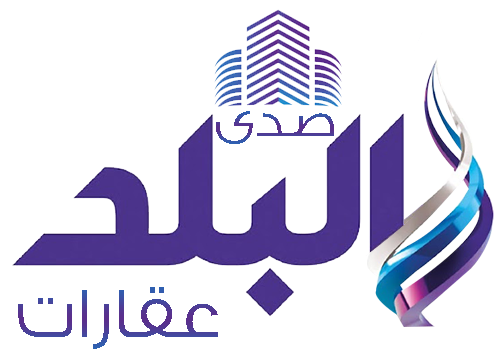Among North Korea’s recent developments, the central government’s resumption of its tourism operations has drawn the most global attention. In response to the COVID-19 pandemic, the regime had taken what might be considered the most quintessentially North Korean approach, which is imposing extreme physical controls to isolate the northern half of the Korean Peninsula from any contact with the outside world.
Except for minimal interactions necessary for regime preservation, all external connections were cut off, effectively turning the country into the largest terrestrial prison on Earth. Following these extraordinary measures, the world has been watching closely for signs of internal reopening. Recently, the regime has begun to exhibit such signs by cautiously reopening its borders through limited trade and tourism. It has permitted the return of diplomatic missions from friendly nations and begun marketing tourism packages to select foreign nationals.
From an outsider’s perspective, North Korean tourism can be characterized distinctly. North Korea is often regarded as “the strangest and most unknown place on Earth.” Visiting North Korea evokes the sensation of stepping into a world straight out of a science fiction novel—a mysterious realm inaccessible to the average person. What makes North Korea so enigmatic is its political system, the structure and function of its social institutions shaped by that system, and the consequences that emerge from it.
The system of hereditary leadership sustained over three generations within a single family—an arrangement without precedent in the modern world—carries profound significance. What enabled such an improbable system to persist into contemporary history is the regime’s continual strengthening and refinement of a “super-centralized” control structure designed for its own survival. To maintain power, the North Korean regime has manipulated and regulated every sensory experience accessible to human perception. Humans understand and engage with the world through their five senses—sight, hearing, smell, touch, and taste—and learn through these inputs. North Korea represents the most extreme case of collective sensory manipulation ever executed. The regime meticulously engineered every aspect that shape individuals—and the individuals themselves. Buildings, roads, signage, statues, urban layouts, food, language, and even gestures have all been designed to serve the regime’s purposes. As a result, North Koreans have been conditioned to worship their leaders as divine beings. In such a system, anyone who deviates from the prescribed norms or challenges the leadership cannot truly exist as an “individual.”
Modern states articulate their legitimacy and authority through curated historical narratives and public exhibitions. At the heart of this strategy lies the “history museum.” As one travels across different countries, cultural and historical traces reveal themselves in streets, buildings, cuisine, and social behavior—offering glimpses into how people live and think. Yet it is through history museums and cultural landmarks that nations most explicitly convey their identity and past. Through the narrative framing within these institutions, states not only express who they are, but often assert a sense of national pride and superiority.
At this stage, the most distinctive feature of North Korean tourism becomes clear. The North Korean leadership has concentrated all historical, regional, and biological identities on legitimizing the regime, preserving its power, and sanctifying its leadership. Every tourist route in the country has been meticulously planned by the leadership. Only routes that pose no threat to regime stability are opened, and everything tourists perceive along those paths is carefully constructed and manipulated. Tourists enter a world that appears to be deliberately designed with specific objectives. North Korean tourism functions as a vast idol-worship museum and a propaganda tool created by the regime. The ultimate purpose behind this entire design is “regime propaganda and foreign currency generation.” The sole aim is to promote the system, bypass international sanctions, and secure foreign currency.
To achieve this, the North Korean leadership aggressively eliminates anything that stands in its way. North Korea is recognized as one of the world’s most egregious human rights violators. To preserve its three-generation hereditary system, the regime does not permit any form of opposition. The criteria for judgment are determined exclusively by the leadership, and those deemed disloyal are subjected to harsh punishments, including public executions, imprisonment in political labor camps, forced labor, and exile. As a result of these systemic abuses, the international community has imposed sanctions on North Korea, and in response, the regime has turned tourism into a propaganda tool to evade those sanctions.
Until the 1970s, North Korea regarded tourism as a product of capitalist culture and a symbol of decadence. However, it was later redefined as a political and diplomatic tool for regime propaganda. According to the Korean Central News Agency, North Korea began its tourism business targeting foreigners in 1956. Its participation in the World Tourism Organization (WTO), the Pacific Asia Travel Association (PATA), and its efforts to register UNESCO World Heritage Sites can be seen as part of a broader attempt to present itself as a normal state. Nonetheless, due to a series of horrific and unfortunate incidents, along with ongoing human rights violations, many countries continue to classify North Korea under travel bans or travel advisories.
Ultimately, the North Korean leadership seeks to use tourists as a means to demonstrate that human rights are not being violated and that residents are living happy, normal lives. At the same time, mechanisms for generating foreign currency have been systematically embedded throughout the tourist routes. From the moment tourists enter North Korea, they are exposed to sensory experiences deliberately crafted by the leadership. Much of the tourist infrastructure has been constructed through the forced labor of residents. The actions and speech of North Korean citizens encountered during tours are strictly controlled, and tourists will be given standardized responses if they ask questions about the leadership. Every element intended to promote the regime and portray North Korea as a normal state is carefully prearranged. Once tourists begin to realize that everything they see and hear is controlled, the experience of North Korean tourism itself becomes a source of fear. The reality of committing one human rights violation to conceal another is disturbing—but it is the undeniable truth of the present.
The sense of mystery in North Korean tourism stems from the fact that tourists can witness the entirety of this design with their own eyes. At the same time, however, various physical dangers await them. Due to the regime’s thorough manipulation for foreign currency generation—such as propaganda and the imposition of excessive exchange fees—any action that disrupts this system or attempts to expose internal realities can lead to punishment. Most accommodations and tourist sites are equipped with eavesdropping devices, and tour guides closely shadow tourists throughout the itinerary to monitor their behavior. Damaging or showing disrespect toward propaganda materials or idolized statues can result in detention. Acts that breach the boundaries of controlled zones can even carry life-threatening consequences. For instance, in 2016, American Otto Warmbier was detained for attempting to smuggle out a propaganda poster; after a year of torture, he was returned in a coma and later died. Similarly, in 2008, South Korean Park Wang-ja was shot to death by North Korean soldiers after crossing a control line during a walk along the coast at the Mount Kumgang tourist site. Traveling to a region where eavesdropping, surveillance, detention, torture, and execution are real risks is, without doubt, not something that can be recommended.
In North Korea, there are individuals—innocent people just like us—going about their lives. The international community must not turn a blind eye to this reality but instead come together to help restore the "humanity" of the North Korean people and work toward a future where genuine tourism is possible. As a citizen of the Republic of Korea, a party to the inter-Korean issue, I conclude this writing with the hope that one day, the residents and children of North Korea will say, "Thank you for doing the right thing."












